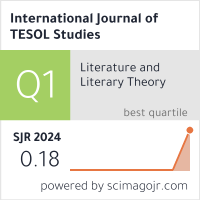2632-6779 (Print)
2633-6898 (Online)


Scopus
Ulrich’s Periodicals Directory (ProQuest)
MLA International Bibliography
MLA Directory of Periodicals
Directory of Open Access Journals (DOAJ)
QOAM (Quality Open Access Market)
British National Bibliography
WAC Clearinghouse Journal Listings
EBSCO Education
ICI Journals Master List
ERIH PLUS
CNKI Scholar
Gale-Cengage
WorldCat
Crossref
Baidu Scholar
British Library
J-Gate
ROAD
BASE
Publons
Google Scholar
Semantic Scholar
ORE Directory
TIRF
China National Center for Philosophy and Social Sciences Documentation
Ying Zhang
Abstract
In the field of computer-mediated communication (CMC), while many studies have focused on utilising various CMC-based tools (e.g. email, video conferencing and virtual worlds) to promote second language (L2) learning, scant attention has been paid to the crucial role of instruction. To enhance EFL learners’ competence, this mixed-methods study investigates the effectiveness of CMC on EFL learners’ competence in two settings: CMC-facilitated interaction alone and CMC-facilitated interaction combined with instruction. Fifty-three university-level Chinese EFL students took part in the study. The treatment group had CMC-based interaction with native speakers through instant messaging over the messaging software Skype and received two sessions of instruction in the targeted feature: the speech act of compliment responses (CRs), whereas the control group had CMCbased interaction without any instructional intervention. The result from an independent samples t-test on the post-intervention mean scores indicated a significant difference between groups for appropriately using CRs, favouring the treatment group (p = .011). In addition, qualitative data were gathered via semi-structured interviews to further interpret the quantitative data and unearth factors that would influence L2 learners’ behaviours. Three main themes were derived based on the thematic analysis, encompassing learners’ L2 pragmatic knowledge, the influence of first language on L2, and their English-learning experience. These findings provide further insight into the positive impact of combining CMC with instruction on EFL learners’ competence. Pedagogical implications for adopting the integration between CMC-based interaction and instruction in L2 pragmatics are discussed.
Keywords
Computer-mediated communication, instruction, L2 pragmatics, speech acts, EFL learners